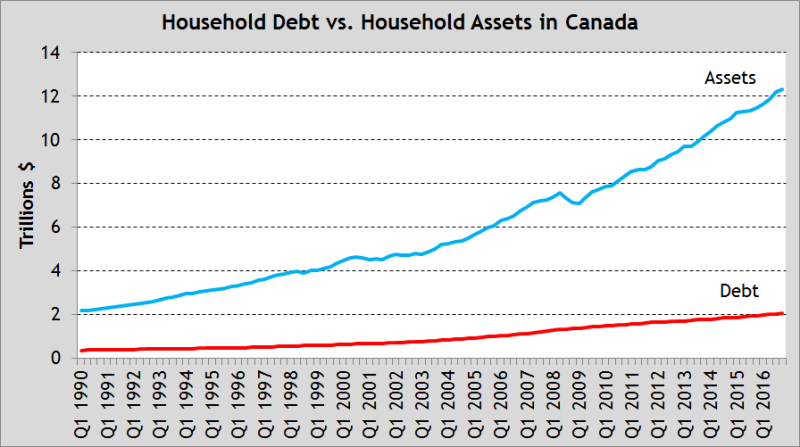Headlines fuel exaggerated concerns about household debt
“Canada’s household debt burden hits record,” read a recent Globe and Mail headline. It’s a headline familiar to many Canadians. In fact, it’s repeated so often that you can be forgiven if you think household debt in this country is out of control.
The problem, however, as a recent study found, is the data upon which these headlines are constructed are incomplete and therefore misleading.
Yes, Canadian households have taken on more debt over time. In fact, household debt eclipsed $2 trillion by the end of last year, up from $357 billion in 1990. And yes, the ratio of household debt to disposable income, which is close to 170 per cent, is at a historic high and nearly double the ratio of 87 per cent in 1990.
But what’s missing in these data is the other side of the balance sheet. Canadian households have taken on more debt, but their assets—real estate, retirement savings, financial investments, etc.—are appreciating over time, causing their net worth to also reach unprecedented levels.
Specifically, household assets have increased from $2 trillion in 1990 to $12 trillion last year (see chart below). As a result, household net worth, which is total assets minus debt, rose to $10 trillion—also a historically high level.

When we properly account for the other side of the balance sheet, it should put into perspective the headlines and misplaced concerns over household debt. After all, Canadian household assets are worth six times more than debt.
Author:
Subscribe to the Fraser Institute
Get the latest news from the Fraser Institute on the latest research studies, news and events.

